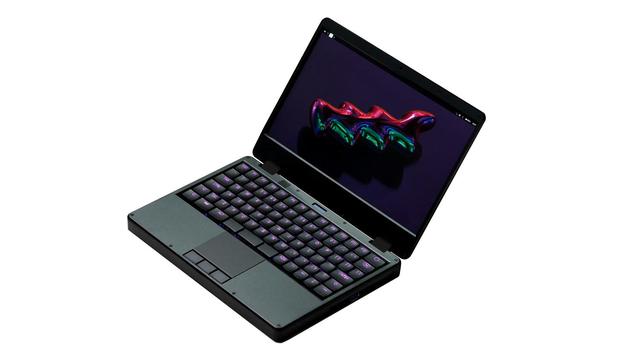@pyoor So jealous. Decided to jump in on the crowdfund for the #mntreformnext
Recent searches
Search options
#mntreformnext
Had the tab open on my browser for ages for the #mntreformnext meaning to get on the crowd funding. Just managed before it closed yesterday.
Are there any thoughts on the performance of the Rockchip RK3588 processor in the MNT Reform Next? I'd love to give it a try, but the last experiment with an ARM processor for a Linux everyday notebook (Thinkpad X13s) didn't go well. And I'm a bit hesitant to spend >1000 just to experiment.
Your #postcapitalist #tool:
"Being highly performant, modular, and upgradeable, #MNTReformNext gives you more freedom than any other #laptop. Swap modules, print your own case, customize your keyboard. Since we are committed to #openhardware, all sources are public."
https://mntre.com/media/reform_md/2024-09-09-introducing-mnt-reform-next.html
Got myself a little treat (cool design) to help wait for the #mntreformnext
Rooting for the team here @mntmn
MNT Reform Next crowdfunding campaign is live (open source laptop for $1099 and up)
The MNT Reform Next is a laptop with a 12.5 inch, 1920 x 1080 pixel matte IPS LCD display, a mechanical keyboard with RBG backlit keys. It’s also designed to be a modular, customizable, and upgradeable notebook: it will initially ship a Rockchip RK3588 processor and up to 32GB of LPDDR5 memory, but since those components are on a user-replaceable system-on-a-module (SoM), the processor and memory can be changed or upgraded.
Made by the same folks behind the MNT Reform and MNT Pocket Reform laptops, the new MNT Reform Next is thinner and lighter than the original Reform laptop. First unveiled earlier this year, you can now reserve a MNT Reform Next with a pledge of $1099 or more through a Crowd Supply crowdfunding campaign.
The starting price is for an entry-level model with 16GB of RAM and 256GB of eMMC storage. You can also pay $200 more for a model with 32GB of RAM and a 1TB PCIe NVMe SSD. Both are expected to ship in September, 2025.
Keep in mind that there’s always a chance that the ship date will be pushed back due to unforeseen delays. The good news is that this is the third laptop from the MNT team, so I’m inclined to think that the company has a pretty good idea of what they’re doing at this point, and I’d say it’s probably that the MNT Reform Next will ship eventually. I just wouldn’t take bets on exactly when that will happen.
The MNT Reform Next is expected to measure 290 x 205 x 26mm (11.42″ x 8.07″ x 1.02″) and weigh about 1.6 kg (3.53 pounds), making it more compact than the original MNT Reform (which is 290 x 205 x 40mm or 11.42″ x 8.07″ x 1.57″ and 1.9 kg or 4.19 pounds).
Other updates include a touchpad instead of a trackball and a set of modular boards that now includes separate boards for the ports, making it possible to further customize the laptop by changing the ports.
And while the original MNT Reform didn’t have a built-in webcam, the new model can support one… although it’s an optional add-on that’s not included by default. There’s also a hardware kill switch that lets you disable the camera when you’re not using it.
With prices starting at $1099, the MNT Reform is rather expensive for a laptop with a RK3588 processor. That’s an octa-core chip with four ARM Cortex-A76 CPU cores, four Cortex-A55 cores, and Mali-G610 graphics. But this isn’t a laptop that’s really meant to compete with the latest hardware from Lenovo, Dell, HP, or Apple on specs. Instead it’s aimed at folks who prioritize open hardware, open source software, privacy, security, and customizability.
Want to swap out the processor for something different? Every processor module that’s compatible with the MNT Reform and Pocket Reform should work with the MNT Reform Next, which means you can replace the RK3588 chip with an FPGA module or a Raspberry Pi CM4 or Banana Pi CM4 module, among others.
Want to buy the entry-level model with eMMC storage and bring your own SSD? There’s an M.2 2242 slot with support for 4-lane PCIe NVMe SSDs, as well as a microSD card reader. Want to replace the batteries? The system uses custom 18650 cell battery packs, allowing you to replace the eight LiFePO4 cells that come with the laptop with any cells using alternate battery chemistry. MNT says that the default batteries provide around 5 hours of run time, but Li-Ion batteries might be able to extend that to 8 hours.
And while the default operating system is the Debian GNU/Linux distribution, you can choose between GNOME, KDE, and Sway desktop environment and support for other Linux distros and operating systems is a work in progress. There’s also support for booting into an operating system from a removable microSD card.
As configured by default, the MNT Reform Next features a set of ports that includes:
- 1 x USB 3.0 Type-C (power & data)
- 2 x USB 3.0 Type-C (data only)
- 1 x USB 3.0 Type-A
- 1 x HDMI
- 1 x Gigabit Ethernet (requires included adapter cable)
- 1 x microSD card reader (bootable)
- 1 x 3.5mm audio
The system also features support for WiFi 5 and Bluetooth 5.0.
And while the simplest way to get your hands on a MNT Reform Next will be to back the crowdfunding campaign and wait for your device to ship, you could also theoretically build your own – MNT has released design files and documentation under the CERN Open Hardware License, Version 2.
MNT Reform Next (Black) MNT Reform Next (Purple) MNT Reform Next (“Raw” Aluminum) Port board (left) Port board (right) RCORE processor module (RK3588) MNT Reform Next camera board (optional) Keyboard Battery pack (1 of 2)Have you heard about MNT Reform Next? Incredibly cool open hardware laptop project. I have just backed it on CrowdSupply. https://www.crowdsupply.com/mnt/mnt-reform-next
#mntre #mntreformnext #reformnext #oshw #foss #arm #fanless

MNT Reform Next is here! A future-proof laptop with a sleek retro-futuristic design, offering modularity, customizability, and high performance. Perfect for developers, creatives, and anyone on the go!
Join the open hardware revolution and stay updated on its launch!
#MNTReformNext #OpenSource #openhardware #arm #ModularLaptop #TechForGood
Learn more: https://mntre.com/media/reform_md/2024-09-09-introducing-mnt-reform-next.html #newz
MNT Reform Next will be a thinner, faster laptop (open hardware)
https://liliputing.com/mnt-reform-next-will-be-a-thinner-faster-laptop-open-hardware/


